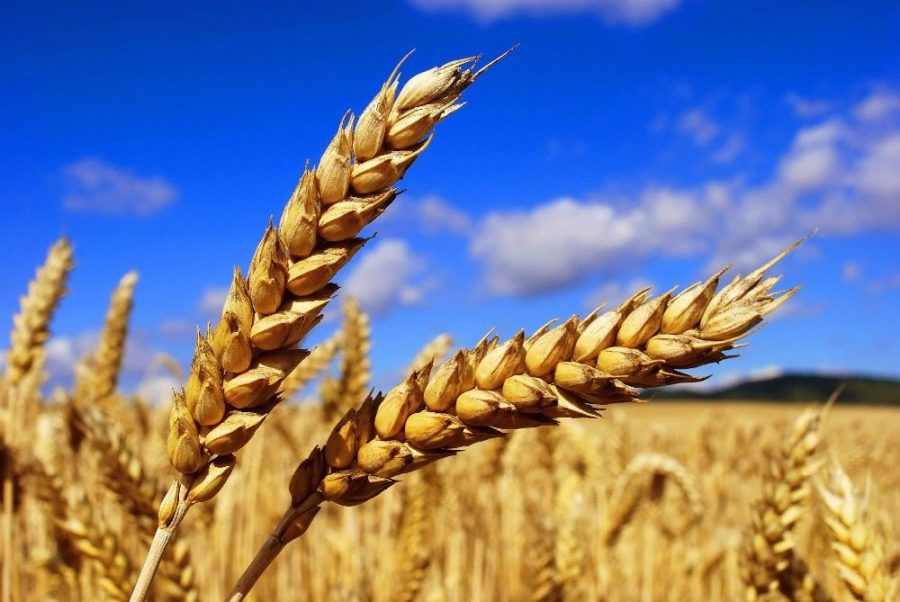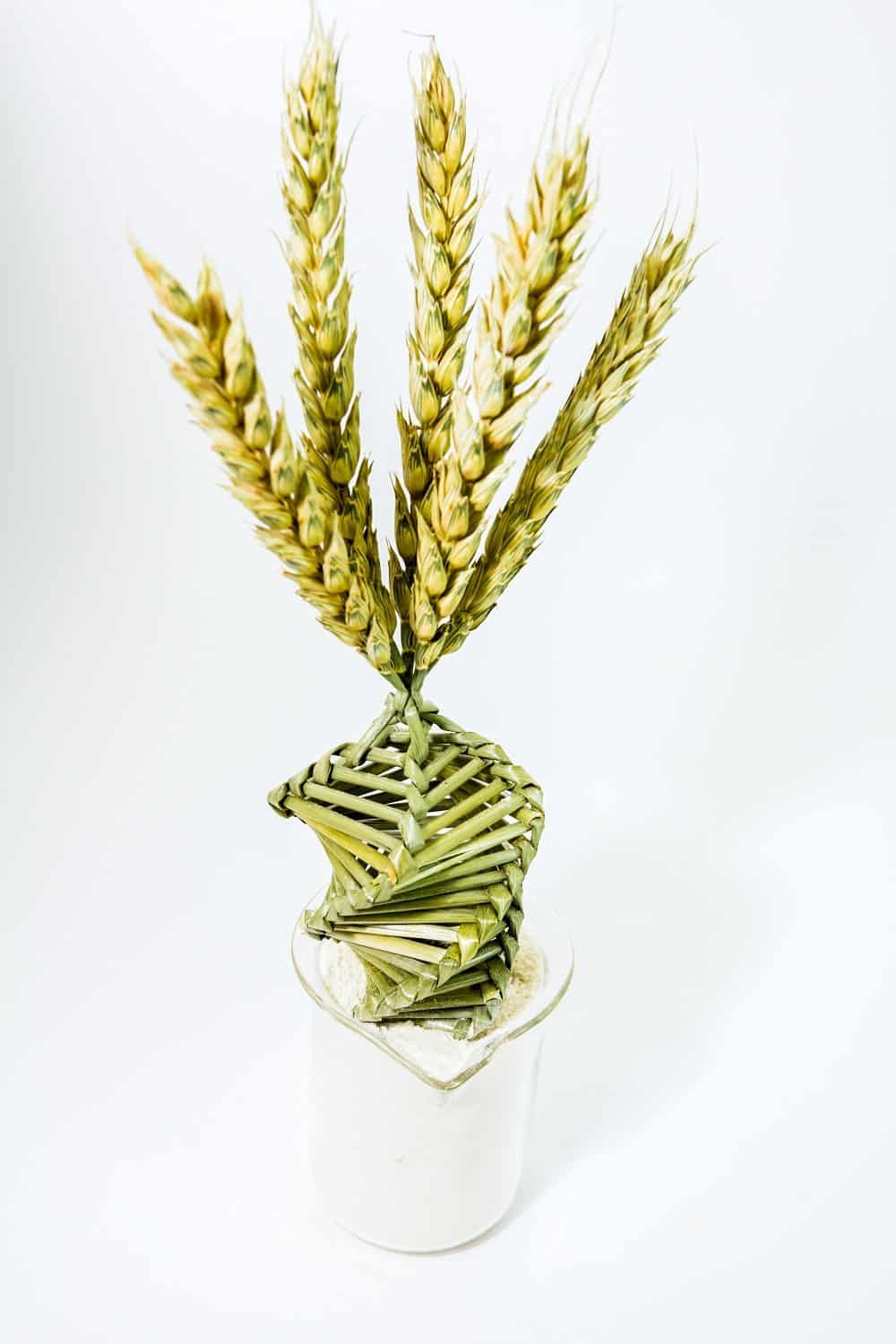Scientists Piece Together the Wheat Genome Puzzle
Big news in tiny science: The wheat genome is finally complete.
Wheat has resisted crop geneticists’ best sequencing efforts for years.
When plant scientists talk about wheat breeding, they often say “Wheat is more complicated than corn or rice.” What does that really mean and why is it so? Every cell in every living thing, plant or animal, contains deoxyribonucleic acid (DNA) which holds the instructions for all of the processes and parts of the cells. DNA is organized into
long structures called chromosomes. Because of the way different species have developed, some of them have more chromosomes than others.Further complicating the matter, different organisms have different numbers of copies of chromosomes. So while a human cell (diploid) has two copies of 23 chromosomes for a total of 46 chromosomes, a wheat cell (hexaploid) has six copies of its seven chromosomes (42 chromosomes total). Corn has 20 chromosomes total, and rice has 24.
For gene sequencing purposes, that means wheat has 21 different chromosomes to map, because they come in pairs. While wheat has fewer pairs of chromosomes than humans, it has a greater number of genes, with an estimated 164,000 to 334,000 genes, compared to 20,000 to 25,000 genes for a human. A gene is a stretch of DNA which holds specific instructions for an organism’s structure or function. Rice, corn, and wheat all come from a common ancestor about 55 to 75 million years ago, but have changed significantly from each other since then.
A genome is all of a living thing’s genetic material, the entire set of instructions for the creation and the function of an organism. Wheat has the largest genome among commonly grown agricultural crops. Each of the sets of three wheat chromosomes is almost twice as large as the human genome and the entirety of the rice genome fits on just one half of one of wheat’s 21 chromosomes.
But now, a team of six scientists—including three from Johns Hopkins University—has successfully mapped the genome of bread wheat, Triticum aestivum, a task that researchers around the world have been trying to crack for more than a decade.
An international consortium assembled an abbreviated genome sequence, full of gaps, in 2014. To improve on that, a team led by Steven Salzberg at Johns Hopkins University School of Medicine in Baltimore, Maryland, tackled the genome using a pair of sequencing technologies. One generates highly accurate short stretches of DNA; the second results in long DNA pieces that can span highly repetitive DNA sequences. Stitching these ‘reads’ together resulted in nearly continuous chromosome sequences that encompassed 15.3 billion of the wheat genome’s bases.
“After many years of trying, we’ve finally been able to produce a high-quality assembly of this very challenging genome,” says Steven Salzberg, Bloomberg Distinguished Professor of Biomedical Engineering at the Johns Hopkins University Whiting School of Engineering and the McKusick-Nathans Institute of Genetic Medicine at the Johns Hopkins University School of Medicine.
According to the Johns Hopkins scientists, bread wheat has one of the most complex genomes, containing an estimated 16 billion base pairs of DNA and six copies of seven chromosomes. By comparison, the human genome is about five times smaller, with about three billion base pairs and two copies of 23 chromosomes.
“The repetitive nature of this genome makes it difficult to fully sequence,” says Steven Salzberg, Ph.D., Bloomberg Distinguished Professor of Biomedical Engineering at the Johns Hopkins University Whiting School of Engineering and the McKusick-Nathans Institute of Genetic Medicine at the Johns Hopkins University School of Medicine. “It’s like trying to put together a jigsaw puzzle of a landscape scene with a huge blue sky. There are lots of very similar, small pieces to assemble.”
The newly assembled bread wheat genome took a year for the team to assemble 1.5 trillion bases of raw data into a final assembly of 15.34 billion base pairs.
To do it, the authors used two types of genome sequencing technology: high throughput and nanopore sequencing.
“As its name implies, high throughput sequencing generates massive amounts of DNA base pairs very quickly and cheaply, although the fragments are very short — just 150 base pairs long for this project,” the researchers explained.
“To help assemble the repetitive areas, we used nanopore sequencing, which forces DNA through tiny pores with an electric current running through them. The technology enables us to read up to 20,000 base pairs at a time by measuring changes in the flow of the current as a strand of DNA passes through the pore.”
Salzberg says that sequencing a genome of this size requires not only genetic expertise, but also very large computing resources available at relatively few research institutions around the world. The team relied heavily on the Maryland Advanced Research Computing Center, a computing center shared by Hopkins and the University of Maryland, which has over 20,000 computer cores (CPUs) and over 20 petabytes of data storage. The team used approximately 100 CPU years to put this genome together.
Using ordered-clone genome sequencing, shotgun sequencing and optical genome mapping, the team pieced together the 4.3 billion nucleotides that make up the plant’s genetic sequence. With this information, the rest of the team was able to identify sequences that make up the genes responsible for specific characteristics in the plant.
These wheat genome sequences may help biologists not only better understand the evolutionary history of wheat, but also advance the quest for hardier, more pest- and drought-resistant wheat types to help feed the world’s growing population.
































